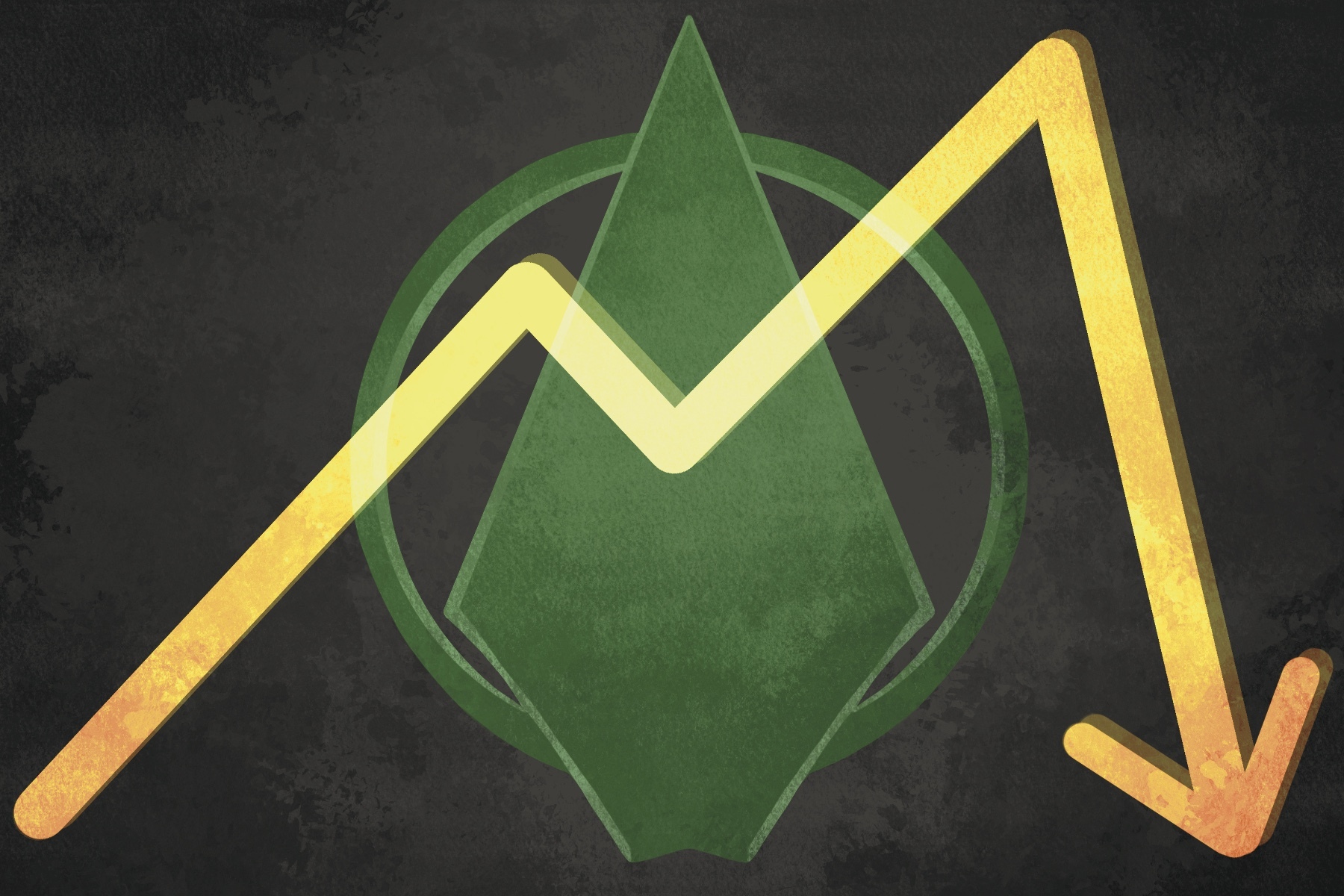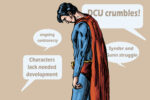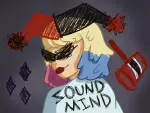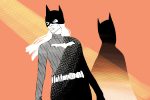The CW just announced that the final show in its Arrowverse lineup is coming to an end. After eight long seasons, “The Flash” will end on its ninth season. First airing in 2014, the series quickly gained a cult following, as did its predecessor, “Arrow,” and the following series, “Supergirl.” However, while the announcement of the final season of “The Flash” brings heartbreak for some, the popular sentiment was that of relief.
The Arrowverse is the name assigned to a group of shows (including its namesake show, “Arrow”) based on DC Comics that all operate and interact with each other within the same universe. This was an ambitious idea at first, but fans have experienced a decaying franchise with writers who just don’t care about their characters or their audience. So, what caused the Arrowverse to fall from grace? How does a cult classic become shunned by the fans who once adored it? Let’s discuss.
Overcrowding
The Arrowverse shows tend to overcrowd the protagonist with side characters, which simply doesn’t work. In every show associated with the Arrowverse, there is a team. This team assists the hero in their heroic acts, and it is usually made up of the same characters in each show: the quirky tech genius, the rough and tough baddie, the scientist who patches people up and the overbearing love interest. In addition to this, the team grows over time to include apprentices, sidekicks and just about any other random superhero who wants to fight. Over time, the show starts to put more and more focus on these side characters, which results in way too much filler content that does nothing but steal the show away from the title hero.
One great example is “The Flash.” The show starts off with a team of four members: Cisco the geek, Harrison Wells the hardcore mentor, Caitlin the scientist and Barry the hero. This team is very small, but it gets the job done. They each serve a purpose, and they don’t take up any more space than they need. As of the latest season, however, about 13 characters make up Team Flash, and none of them seem to have any purpose within the group. They simply supply the season with petty, unimportant drama that no one will remember by the next season.
Not-So-Super Heroes of the Arrowverse
The CW is known for cheesy, mediocre television, and cringe-worthy superhero fights may play a part in it. How much realism are you willing to give up for a couple of cool superhero poses? It’s embarrassing. The show “Supergirl” proves to be the biggest culprit in all the Arrowverse, as the supposed strongest woman on Earth gets demolished in almost every single episode. Supergirl’s powers include super strength, laser eyes, the ability to fly and more, and she is proven to be a powerhouse in the Arrowverse. Despite this, Kara Danvers, Supergirl, still struggles to hold her own — even against humans.
The same can be seen in “The Flash.” Barry, who has the power of super-speed, is constantly pushing the limits of his speed and unlocking new abilities along the way. Why then, if he is constantly getting faster, is he so reluctant to use his speed? Barry could end every fight in about five seconds by speeding them off to jail without a peep from the other guy. But instead, he’ll spend five minutes talking to the villain while they plan and execute their escape. At the end of the day, it’s obvious CW puts more emphasis on what looks good on screen than what actually makes sense.
Repetitive Storylines
Speaking of underwhelming superheroes, did you know that superheroes can’t function without the help of a motivational pep talk every other episode? It’s true. The Arrowverse is notorious for its mid-conflict pep talks that provide the hero with just enough energy to finally defeat the big, bad villain. In “The Flash,” Barry is constantly given pep talks by his love interest and other teammates whenever he feels frustrated or incapable. Additionally, these pep talks are often followed by the repeating, infamously annoying phrase “Run, Barry. Run.” However, the repetition doesn’t stop there.
One major complaint from viewers about the CW shows is that every season is just like the last — and they are right. Let’s take “Arrow” for example. Oliver, the green bow slinger himself, is a very intense character. He has very gray morals, and he’s not one for sentiment or empathy. However, this all changes when a new villain poses a threat to Oliver and his gang. Oliver puts up a good fight, but he is ultimately proven to be not strong enough. In response, Oliver runs away and falls into a deep state of depression.
Later on, he is pulled back into the real world by a few heartfelt words from his team, and, with this “new information,” Oliver is able to stop the guy he was after. At the end of the season, Oliver announces that he is ready to quit being the Arrow, only to come back in the next season to say that his team needs him. This is the norm for every season of “Arrow” and “The Flash,” and, believe me, hearing “Run, Barry. Run” a billion times over quickly gets old. At the end of the day, it is not hard to see the laziness of the CW’s Arrowverse.
Crossovers and the Power of “Togetherness”
Crossover episodes proved to be the nail in the coffin for the Arrowverse. The crossovers began in Season 2 of “Arrow” when Barry Allen cameoed in an episode called “The Scientist.” Fans were ecstatic to see their favorite comic book speedster interact with the Arrow, and that was before Barry even became the Flash. After the launch of “The Flash” in 2014, these crossover episodes slowly became more frequent, and other superheroes were even added to the mix. In Season 1 of “Supergirl,” the Flash meets Supergirl for the first time by accidentally falling into an alternate universe. This brought the Arrowverse to a whole new level, as it set a precedent that any show was “technically” free to crossover into the other.
Finally, from this came the big yearly crossovers. These episodes are stretched over multiple parts, and each part is aired on a different show, recapping all the events of that show up until that point. This seems great in theory, but many fans found it to be a cheap excuse to bring more viewers to their less popular series. Additionally, these episodes somehow ended up having cheesier writing than the regular episodes. The worst of all of them has to be “Crisis on Infinite Earths,” in which the combined heroes must find the paragons of Earth to keep the Anti-Monitor and Lex Luthor from using them to destroy the multiverse. This crossover event left fans outraged by the lack of care that was put into each episode, including underwhelming cameos, a confusing storyline and plot holes so big they make the show utterly unwatchable. Fans eventually got tired of this new approach to the shows, and though producers had the best intentions, the crossovers were the worst thing to happen to the Arrowverse franchise.
What Worked Before in the Arrowverse
It’s no secret that the Arrowverse is not the pinnacle of television. However, there once was a time when it was good, and fans genuinely enjoyed the show. Sure, it was cheesy and cringy at times, but people still watched it. But why?
For starters, the Arrowverse franchise started with “Arrow” in 2012 and expanded in 2014 and 2015 with the additions of “The Flash” and “Supergirl.” During this time, superheroes were a huge selling point, as Marvel’s Avengers franchise had skyrocketed in popularity. Despite this, very few superheroes were represented on television, so “Arrow,” “The Flash” and “Supergirl” really had no other competition. It became a novelty, and fans would soon grow to become loyal followers of the Arrowverse franchise.
Additionally, most of these shows had genuinely good first seasons, showing their potential to outgrow their humble beginnings as afterschool specials. Lastly, the Arrowverse showcased some underexposed characters in the comics, leaving big screen characters such as Batman and Superman mostly out of the picture.
It’s not hard to figure out why fans enjoyed the Arrowverse so much. However, it’s a shame what it has become. As the last season of “The Flash” brings on the end of an era, many fans will watch simply for the fact that it is a novelty they once enjoyed. Because of this, the Arrowverse is a good example of the shows we outgrow but never stop loving.

















